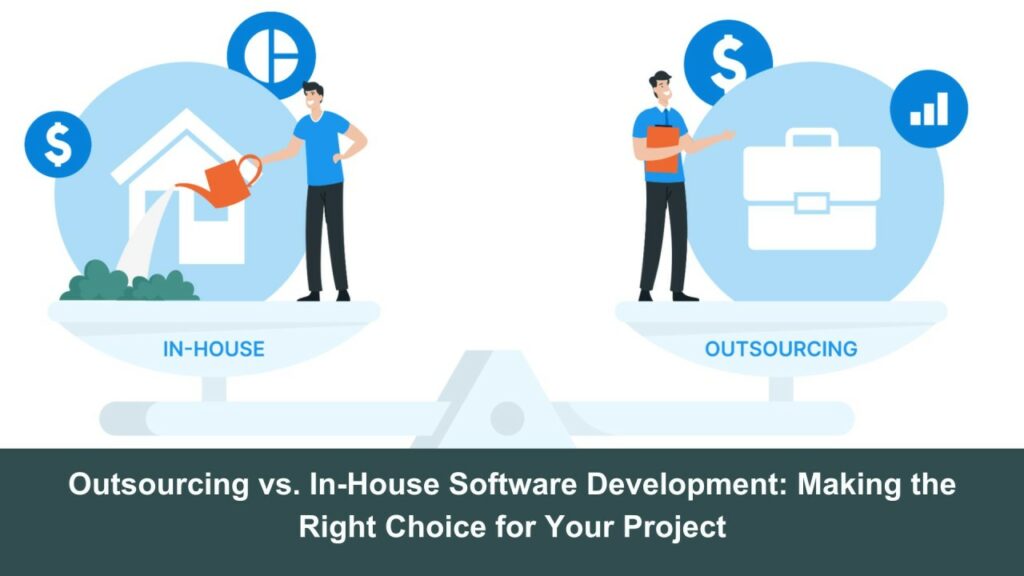In an unpredictable economy, every dollar holds value. Even small changes in revenue or costs can greatly influence profits. Simple and practical steps within a cost-cutting strategy can make a big difference.
While the end of the year is a good time to review business practices, any moment is suitable for this assessment. Taking time to reflect on strengths and weaknesses can guide effective cost-saving measures.
The rising cost of living affects how consumers spend their money. When prices go up, people have less to spend. This change can lower demand for products and services from small businesses. At the same time, businesses are facing higher costs for rent, utilities, raw materials, and taxes. These expenses can shrink profits and make it difficult to stay afloat. Price increases might seem necessary, but they can also lead to reduced demand, creating a cycle of declining sales and profits.
This article will look into effective ways to cut costs and improve the bottom line. Many creative solutions can save money without harming a business’s reputation or jeopardizing its success.
Table of Contents
Understanding Business Costs
What is a business cost? A business cost refers to any expense incurred while selling products or services. These costs can include various expenses. These include purchasing ingredients, paying employee salaries, or covering rent for a business location.

Fixed costs are necessary expenses that stay the same, no matter how much is produced or sold. Common examples include rent, staff salaries, insurance premiums, property taxes, loan payments, and maintenance costs for equipment. Typically, fixed costs are paid regularly, such as monthly or yearly. Managing fixed costs is important for maintaining profitability. These expenses can accumulate quickly and impact overall profits. That is why it is good to keep a close watch on them.
Variable costs, on the other hand, change based on production levels or sales volume. Examples of variable costs include raw materials, wages for hourly employees, and transportation costs for delivering products to customers. These costs are often referred to as “direct costs.” They can be directly linked to the creation of goods or services. By understanding how variable costs fluctuate with production changes, businesses can gain insight into their cost structure. This can help them make better pricing decisions.
What Does It Mean To Cut Costs?
Cutting costs means reducing expenses in the production or service process to increase profits. This can be done by executives or managers, who identify areas where savings can be made. In some cases, managers or employees can spot ways to reduce costs. Sometimes they implement changes or share their ideas with decision-makers.
The aim of cost-cutting is not to boost revenue, but to lower the monthly expenses a business has while delivering its products or services. Common costs that may be reduced include administrative, production, and material costs. Cost-cutting can be applied to both large and small businesses. It’s an effective way to review how money is used and whether financial goals are being met.
Ways to Cut Costs as a Small Business
Here are some ways you can implement to reduce costs:
Track Operational Efficiency
Tracking your operational efficiency is important in cutting costs. Understand how long tasks take, and what resources are used. Track which processes are most successful. This helps gain key insights into areas where improvements can be made. Identifying inefficiencies, bottlenecks, or resource waste is the first step to saving money.
Start by monitoring operations through project management software. Use Trello, Asana, Basecamp, or Monday.com. These tools allow you to track progress and time spent on tasks. You could also integrate analytics platforms like Google Analytics. It monitors marketing and operational performance.
Creating reports and dashboards that track key performance indicators (KPIs) is also important. For example, measuring customer satisfaction ratings, production times, or sales performance. These can give you a better overview of where to allocate resources. With this data, it becomes easier to make informed decisions, adjust operations, and cut unnecessary expenses.
Look at Your Insurance
Reviewing insurance contracts can help save money. Small businesses often allow policies to renew automatically, which may result in paying too much. Insurance rates can change depending on industry trends and market conditions. It’s a good idea to check insurance coverage each year.
Many don’t realize that it’s possible to renegotiate insurance contracts or switch to another provider for better deals. This can be done without losing essential coverage. Comparing different providers, increasing deductibles, or re-evaluating property value can lead to lower premiums.

Bundling insurance policies, such as general liability and property coverage, can also bring savings. Many insurance companies offer discounts when multiple policies are grouped together. This method is similar to how auto and homeowners insurance work. It helps save money without giving up needed protection.
It’s important to stay proactive when it comes to reviewing and adjusting insurance. This simple step can make a big difference in expenses.
Develop a Budget
A budget is one of the most important tools in managing costs. If your business doesn’t already have a budget, creating one is important. A well-structured budget helps you plan for future expenses. You can make smarter investment decisions and avoid unnecessary spending. It also allows you to allocate money to different departments.
Start by tracking your income and expenses for a certain period. This could be a month or a quarter. Break down costs into categories like operational, marketing, payroll, and miscellaneous expenses. Once you have a clear overview of your spending, assign a budget to each department or expense category.
Be sure to include both fixed costs and variable costs. This method enables you to see where money is being spent and make decisions accordingly. Stick to this budget as closely as possible. Regularly review your financial status to make sure you’re not overspending. A well-managed budget is an excellent way to control costs and boost profitability.
Minimize Wasted Time
Time is money, especially for small businesses where productivity directly impacts the bottom line. Reduce distractions and limit time-wasting activities. These can be unnecessary meetings, and it will allow employees to focus on what truly matters.
There are several apps designed to help boost focus. It includes Forest, Focus@Will, and Pomodoro timers, which can motivate employees to stay concentrated. These tools should be paired with clear expectations and reasonable demands. Make sure that your team works without feeling overwhelmed.
Another method to save time is by automating manual tasks. Use tools like GoCardless for Xero. This can automate invoice creation and reconciliation, freeing up valuable time that employees can spend on other essential tasks.
Invest in Staff
Employees are one of the biggest assets of any business. Keeping them happy and productive can save you both time and money in the long run. By offering training and development programs, organizing team-building activities, and creating a flexible work culture, you can boost employee morale without breaking the bank.
A positive work environment leads to higher productivity and less turnover. When employees feel supported and valued, they are more likely to stay with the company. This reduces recruitment and onboarding costs. Investing in your workforce is an investment in the future of your business.
Reorganize Departments
If you run a small business, you might find that different departments are performing overlapping functions. This leads to unnecessary costs. For example, your PR and communications teams might both be handling tasks related to advertising or social media management, causing duplicated efforts. By merging similar roles, you can improve efficiency and eliminate unnecessary overhead.
Restructuring your departments also allows for better use of resources. Removing redundancies will help your team focus on the most critical areas of your business.
Restructure Services
Another way to cut costs is by examining your services to identify those that are underused or unnecessary. If you have a 24-hour tech support line but most calls come in during business hours, consider reducing or eliminating the night shift. Use digital tools, like inventory management software. This can help you track demand and adjust staffing levels accordingly.
Scaling back services that don’t provide value can have a positive effect on your business’s bottom line. Focusing resources on high-demand areas and cutting back on low-usage services is an efficient way to reduce expenses.
Decide Whether to Outsource or Bring Work In-House
Outsourcing is often a cost-effective way to handle specific tasks without hiring full-time employees. Hiring freelancers or contractors allows you to save on salaries, benefits, and overhead costs. Platforms like Upwork and Fiverr make it easy to find qualified freelancers for various tasks. You can find people for writing and graphic design to web development and customer support.

Freelancers typically charge by the hour or project, so you only pay for what you need. However, it’s essential to research freelancers thoroughly, as the cheapest option might not always be the best. Look at reviews, portfolios, and past work before making your decision.
On the other hand, if you’re outsourcing multiple tasks that are repetitive, it may be more cost-effective to bring the work in-house. Hiring a full-time employee can save you money in the long term, especially if the volume of work justifies it. Review your current expenses to see if it makes more financial sense to handle certain tasks internally.
Travel Less and Think About Working Remotely
Business travel is often a significant expense. With modern technology, it’s easier to minimize the need for face-to-face meetings. Platforms like Zoom, Google Meet, and Microsoft Teams enable virtual meetings, saving on travel and accommodation costs.
If travel is necessary, consider setting limits on travel expenses. Go for public transportation over rental cars, and choose budget-friendly accommodations.
Encouraging remote work is another excellent way to cut costs. By allowing employees to work from home, you can reduce overhead costs like office space, utilities, and supplies.
Reduce Energy and Paper Usage
Cutting down on energy use is one of the easiest ways to save money. Switching to energy-efficient bulbs can help lower utility costs. Turning off lights and electronics when not needed also reduces bills. Investing in energy-saving appliances adds to the savings.
Lowering energy use can also show a commitment to sustainability. This can improve a business’s image and attract customers who value eco-friendly practices.
Reducing paper use is another way to cut costs. Switching to digital documents and cloud storage helps save on printing and copying. Encouraging employees to rely on emails and other digital communication can lead to significant savings over time.
While saving money is key in today’s competitive market, keeping the quality of products or services high is just as important. It’s helpful to regularly review cost-cutting methods. Make sure that these strategies do not negatively affect the business. Align them with long-term plans and goals.
It’s necessary to strike a balance between reducing costs and maintaining standards. A small cut in quality could harm customer trust and lead to lost business. Regular evaluation ensures that both cost savings and quality stay intact.
By being mindful of these factors, businesses can save money and continue to grow.
For more similar blogs, visit EvolveDash today!
FAQs
- Is cutting employee benefits a good way to save costs?
Cutting employee benefits can save money in the short term, but it may lead to lower employee morale and higher turnover. Instead, focus on improving efficiency or offering flexible benefits that cost less but still keep employees happy.
- What role does inventory management play in cutting costs?
Effective inventory management prevents overstocking and reduces storage costs. It also ensures that capital isn’t tied up in unsold products. Implementing an inventory management system can help track demand and adjust purchasing accordingly.
- How often should a business review its budget for cost-cutting?
A budget should be reviewed regularly, at least every quarter. This allows for quick adjustments to spending habits and helps identify areas where costs can be trimmed. Regular reviews can also reveal new savings opportunities.
- Can reducing marketing expenses hurt the business?
Reducing marketing expenses can be risky, as it may lower visibility and customer reach. Instead of cutting marketing entirely, focus on cost-effective strategies such as social media, email marketing, and organic search engine optimization (SEO), which offer strong returns without heavy costs.
- How does sustainable business practice help reduce costs?
Sustainable practices, like reducing energy usage or minimizing waste, can cut long-term costs. It also improves your business reputation, which can attract more customers.



















